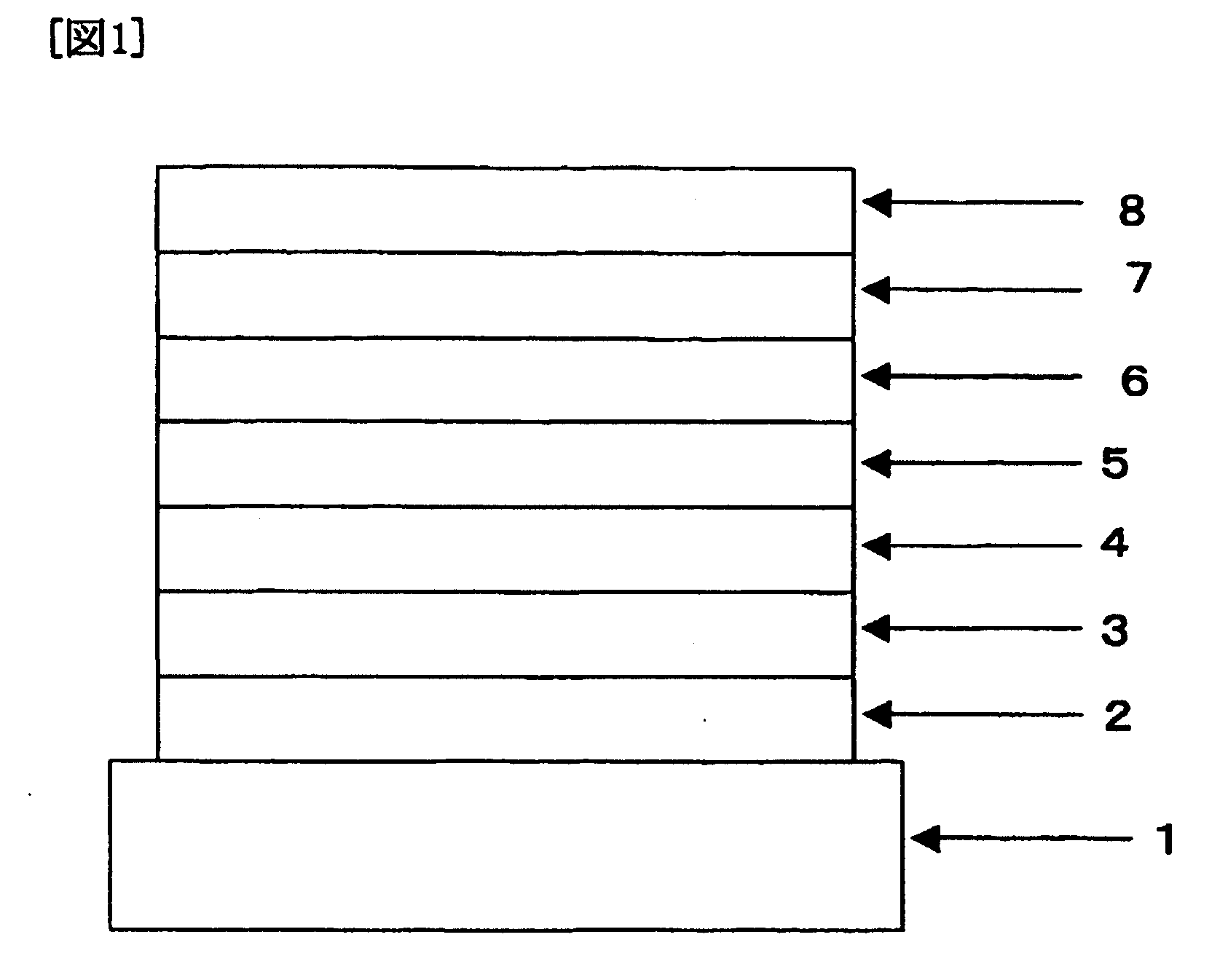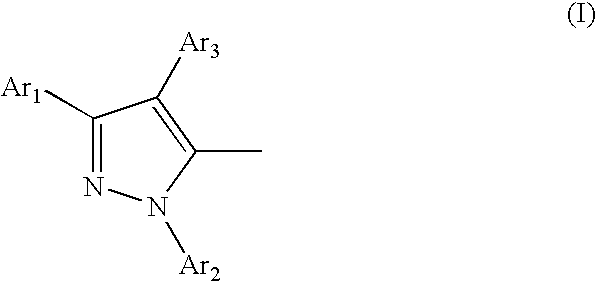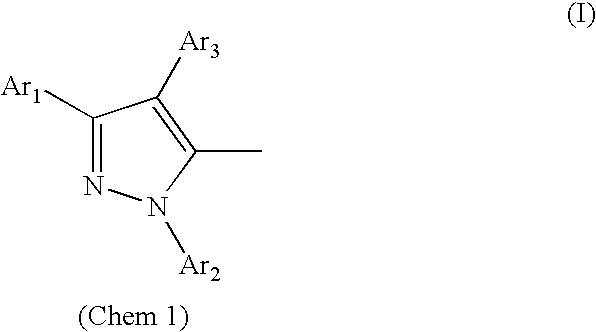Organic electroluminescent device
a technology of electroluminescent devices and organic elements, which is applied in the direction of luminescent compositions, organic chemistry, other domestic articles, etc., can solve the problems of inability to achieve high luminous efficiency, inability to use in practical applications, and elements utilizing phosphorescent molecules of ir(ppy)3, although highly efficient, so as to improve the driving stability and heat resistance of organic el elements, high efficiency, and high driving stability
- Summary
- Abstract
- Description
- Claims
- Application Information
AI Technical Summary
Benefits of technology
Problems solved by technology
Method used
Image
Examples
synthetic example 1
[0072] In a 300-ml four-necked flask were placed 10.9 g (0.27 mole) of sodium hydroxide, 52.7 g of ethanol and 98.3 g of deionized water. The mixture was stirred at room temperature for 10 minutes until the sodium hydroxide dissolved and 26.1 g (0.22 mole) of acetophenone was added. Thereafter, the mixture was cooled by ice water and 14.1 g (0.11 mole) of terephthaldehyde was added. After the addition, the mixture was heated under reflux with stirring for 4 hours. Upon completion of the reaction, the reaction mixture was cooled to room temperature and a solid was collected by filtration. The solid was made into a slurry by ethanol and dried under reduced pressure to give 28.5 g of a yellow powder. This powder was analyzed by thin-layer chromatography (TLCG) to be a single product. Analysis of this product by mass spectrometry showed that its molecular weight was 338 and identical with that of the target compound calcone. The yield of the isolated product was 80.1%.
synthetic example 2
[0073] In a 2000-ml four-necked flask were placed 20.1 g (0.36 mole) of potassium hydroxide and 1482.7 g of ethanol. The mixture was stirred at room temperature until the potassium hydroxide dissolved and 32.8 g (0.10 mole) of the calcone obtained in Synthetic Example 1 was added at room temperature. Further, 40.4 g (0.37 mole) of phenylhydrazine was added at room temperature. After the addition, the mixture was heated under reflux with stirring for 2.5 hours. Upon completion of the reaction, the reaction mixture was cooled to room temperature and a solid was collected by filtration. The solid was washed with methanol and hexane and dried under reduced pressure to give 42.1 g of a yellow powder. This powder was confirmed to be a single product by TLCG. Analysis of this product by mass spectrometry showed that its molecular weight was 518 and identical with that of the target pyrazoline compound. The yield was 83.7%.
synthetic example 3
[0074] In a 500-ml four-necked flask was placed 354.4 g (4.480 moles) of pyridine. Then, 57.6 g (0.19 mole) of antimony pentachloride was added slowly in drops so that no vigorous generation of heat occurred. After the dropwise addition, the mixture was allowed to cool to room temperature and 25.9 g (0.050 mole) of the pyrazoline compound obtained in Synthetic Example 2 was added. After this addition, the mixture was stirred at room temperature for 3.5 hours. Upon completion of the reaction, a solid was recovered by filtration. The solid was washed with ethanol to give 42.1 g of a pale brown powder. The powder was recrystallized twice from methylene chloride to give 18.3 g of white crystals. Analysis of the crystals by TLCG confirmed the formation of a single product and analysis of the product by mass spectrometry showed that its molecular weight was 514 and identical with that of the target compound 5,5′-(1,4-phenylene)bis[1,3-diphenyl-1H-pyrazole] (hereinafter referred to as PBP)...
PUM
| Property | Measurement | Unit |
|---|---|---|
| wt % | aaaaa | aaaaa |
| transmittance | aaaaa | aaaaa |
| transmittance | aaaaa | aaaaa |
Abstract
Description
Claims
Application Information
 Login to View More
Login to View More - R&D
- Intellectual Property
- Life Sciences
- Materials
- Tech Scout
- Unparalleled Data Quality
- Higher Quality Content
- 60% Fewer Hallucinations
Browse by: Latest US Patents, China's latest patents, Technical Efficacy Thesaurus, Application Domain, Technology Topic, Popular Technical Reports.
© 2025 PatSnap. All rights reserved.Legal|Privacy policy|Modern Slavery Act Transparency Statement|Sitemap|About US| Contact US: help@patsnap.com



